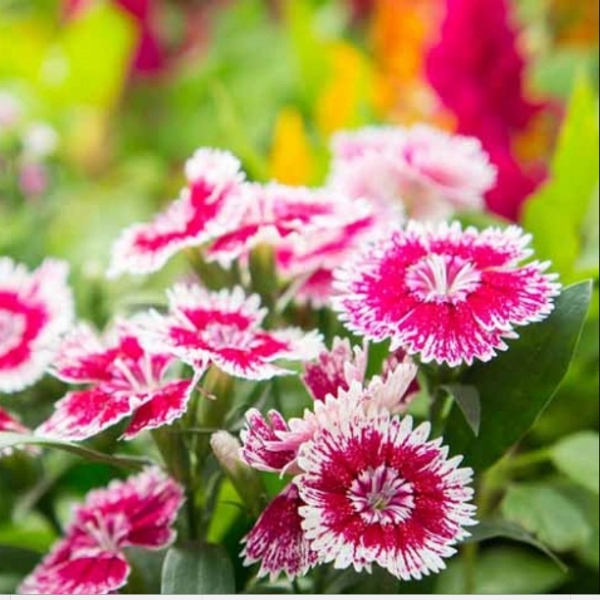Introduction:
Dianthus chinensis, commonly known as Chinese pink or rainbow pink, is a popular ornamental plant that belongs to the family Caryophyllaceae. The plant is native to China and Japan and is widely cultivated around the world for its colorful and fragrant flowers. In this blog, we will discuss the different aspects of Dianthus chinensis, including its physical characteristics, varieties, cultivation, and medicinal properties.
Physical Characteristics:
Dianthus chinensis is a herbaceous perennial plant that grows up to 30 cm in height. The plant has narrow, lance-shaped leaves that are grayish-green in color and grow up to 5 cm in length. The flowers of Dianthus chinensis are small and usually come in shades of pink, red, and white. The flowers have a characteristic spicy fragrance and are popularly used in bouquets and floral arrangements.
Varieties:
There are many different varieties of Dianthus chinensis available, each with its own unique characteristics. Some popular varieties include:
-
‘Heddewigii’: This variety has large, double flowers that come in shades of pink, red, and white.
-
‘Chianti’: This variety has deep maroon-red flowers that are popular for their bold and dramatic color.
-
‘Super Parfait Raspberry’: This variety has bright pink flowers with a white center, and is popular for its striking contrast of colors.
Cultivation:
Dianthus chinensis is a relatively easy plant to grow and is well-suited to most garden conditions. Here are some tips for cultivating Dianthus chinensis:
-
Soil: Dianthus chinensis prefers well-draining soil that is slightly alkaline. Amend the soil with compost or other organic matter to improve its fertility and drainage.
-
Light: Dianthus chinensis prefers full sun or partial shade. Make sure the plant receives at least six hours of sunlight each day.
-
Water: Dianthus chinensis prefers moderate moisture levels. Water the plant regularly, but be careful not to overwater it, as this can lead to root rot.
-
Fertilizer: Fertilize Dianthus chinensis with a balanced fertilizer once a month during the growing season.
-
Pruning: Prune the plant regularly to promote bushy growth and remove any dead or damaged stems or flowers.
Medicinal Properties:
Dianthus chinensis has a long history of medicinal use in traditional Chinese medicine. The plant is believed to have antipyretic, analgesic, and anti-inflammatory properties, and is used to treat a variety of ailments, including fever, headache, and joint pain. The plant is also believed to have diuretic properties and is used to treat urinary tract infections.
Conclusion:
Dianthus chinensis is a beautiful and versatile plant that is well-suited to most garden conditions. With its colorful and fragrant flowers, it is a popular choice for adding interest and beauty to any outdoor space. In addition to its ornamental value, Dianthus chinensis also has a long history of medicinal use, making it a valuable plant in traditional medicine. Whether you are a seasoned gardener or a beginner, Dianthus chinensis is a great choice for adding beauty and interest to your garden, while also providing potential health benefits.
















